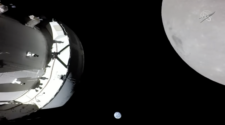
NASA’s Orion Artemis 1 spacecraft snapped a series of beautiful selfie views with the cratered lunar surface and the crescent Earth rising against an eerie backdrop of the blackness of space as it conducted the critical return flyby powered (RPF) maneuver Monday, Dec. 5 – that irreversibly committed the capsule to depart lunar orbit and a return to the Earth after completing a final close flyby of the Moon and finishing the last major burn of the unprecedented test flight.
Simultaneously, it whets our appetites with a spectacular astronaut’s eye view of what’s in store the next time Orion flies with a crew of four on the Artemis 2 mission slated for liftoff by late 2024.
Orion harnessed the Moon’s gravity, significantly bending its trajectory for a slingshot maneuver back to Earth at a distance of a quarter of a million miles on Flight Day 20 of the 26-day unpiloted Artemis 1 mission.
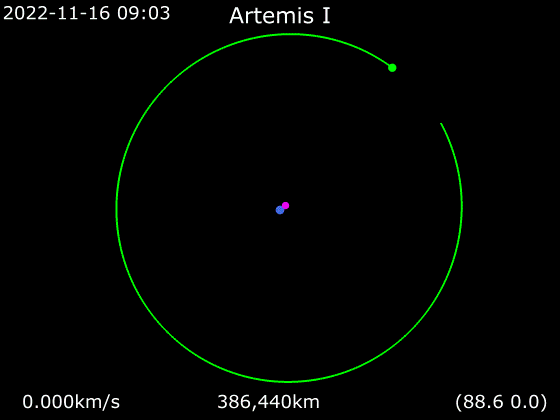
The spacecraft made its second and final close approach to the Moon at 11:43 a.m. EST Monday, Dec. 5, just before its return flyby burn, passing 80.6 miles (129 km) above the lunar surface.
The burn, which used the spacecraft’s main engine on the European-built service module, lasted 3 minutes and 27 seconds, The burn changed the velocity of the spacecraft by about 655 mph (961 feet per second).
The 207-second-long RPF burn also counted as the longest and last of the five firings performed by Orion’s Orbital Maneuvering System (OMS) main engine. The OMS main engine is attached to the base of the European Space Agency-built Service Module and provides about 6,000 pounds of thrust to slingshot Orion around the Moon.
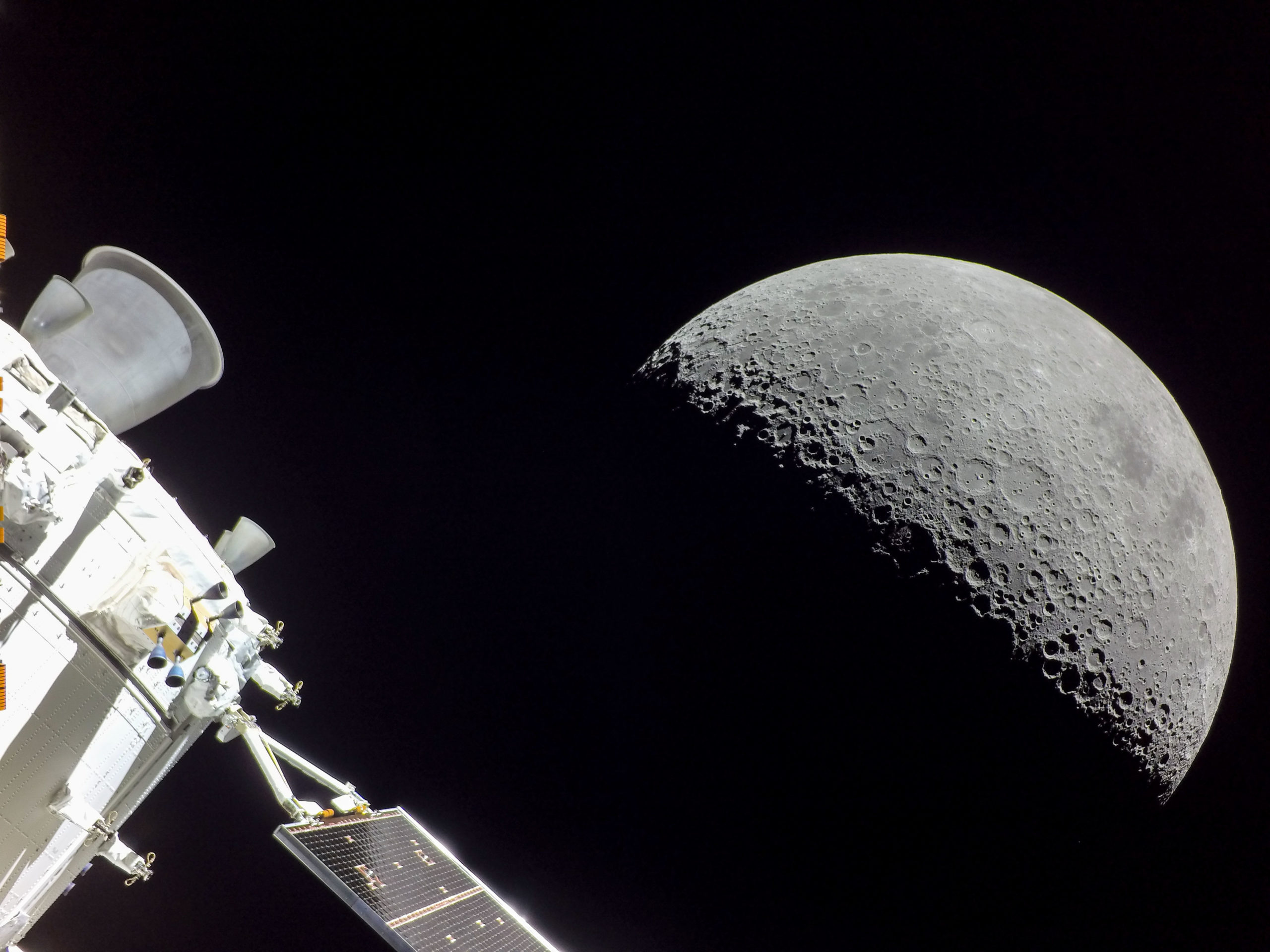
The OMS engines – built by Aerojet Rocketdyne – are recycled from the retired Space Shuttle program.
This flight-proven engine flying on Artemis I previously flew on 19 Space Shuttle flights, beginning with STS-41G in October 1984 and ending with STS-112 in October 2002.
RBF was the last major engine maneuver of Orion’s maiden flight which will conclude with a splashdown in the Pacific Ocean near Guadalupe Island on Sunday morning, Dec. 11.
“Orion is heading home!” said Administrator Bill Nelson. “When Orion re-enters Earth’s atmosphere in just a few days, it will come back hotter and faster than ever before – the ultimate test before we put astronauts on board. Next up, re-entry!”
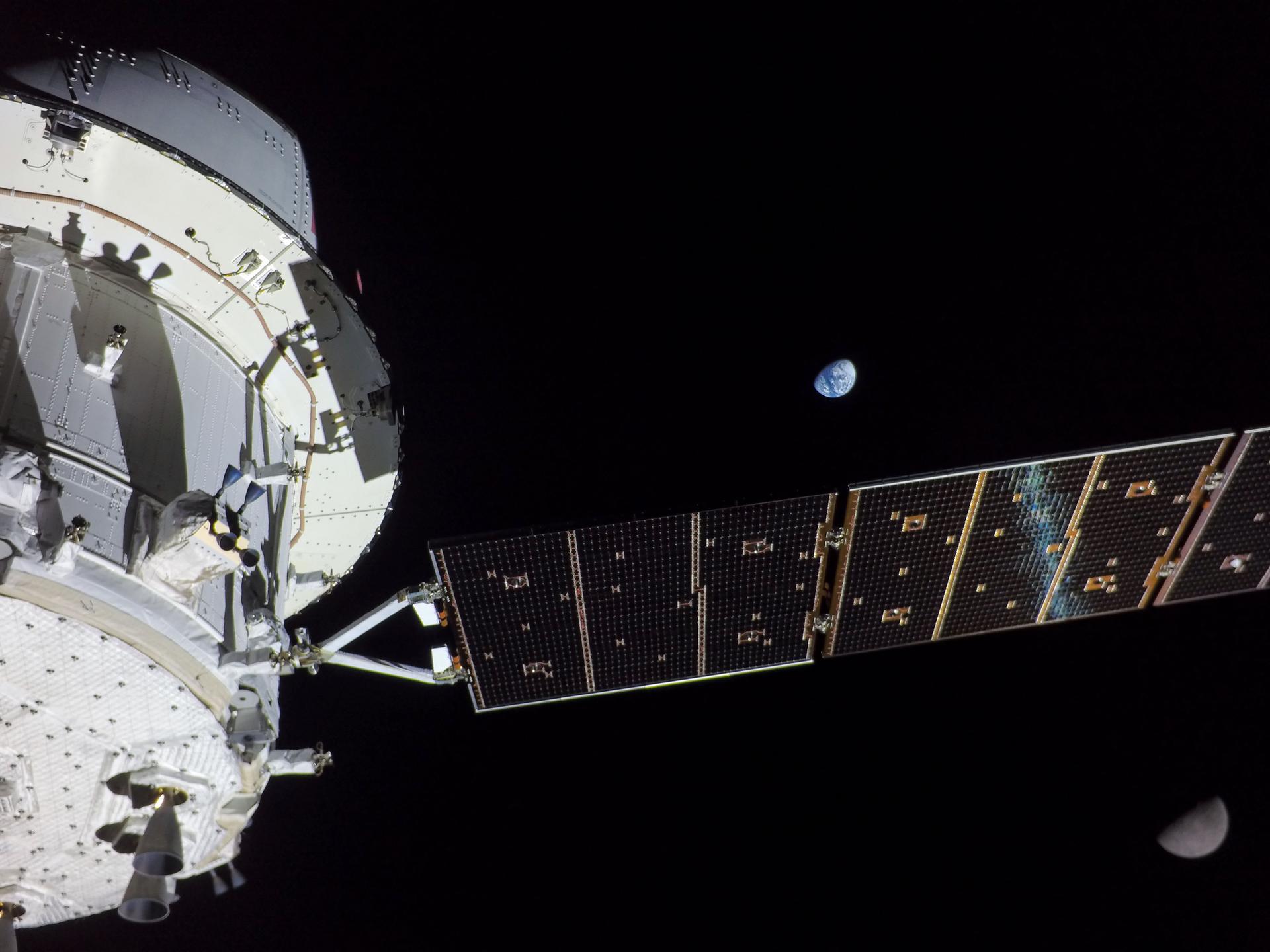
As of 6:29 p.m. EST on Dec. 5, Orion was traveling 244,629 miles from Earth and 16,581 miles from the Moon, cruising at 668 mph.
During this second and final close flyby of the Moon, the Orion spacecraft also flew over some sunlit portions of the Moon’s nearside. It flew some 6,000 miles (10,000 kilometers) overhead several Apollo landing sites including Apollo 12 and 14 – too far away to actually see any manmade objects.
Overall Orion will journey 1.4 million miles from the Nov. 16 launch to Dec. 11 splashdown.
Depending on the final weather forecast NASA can target Orion to land a little long or a little short during its reentry to target the best spot with the least waves and winds.
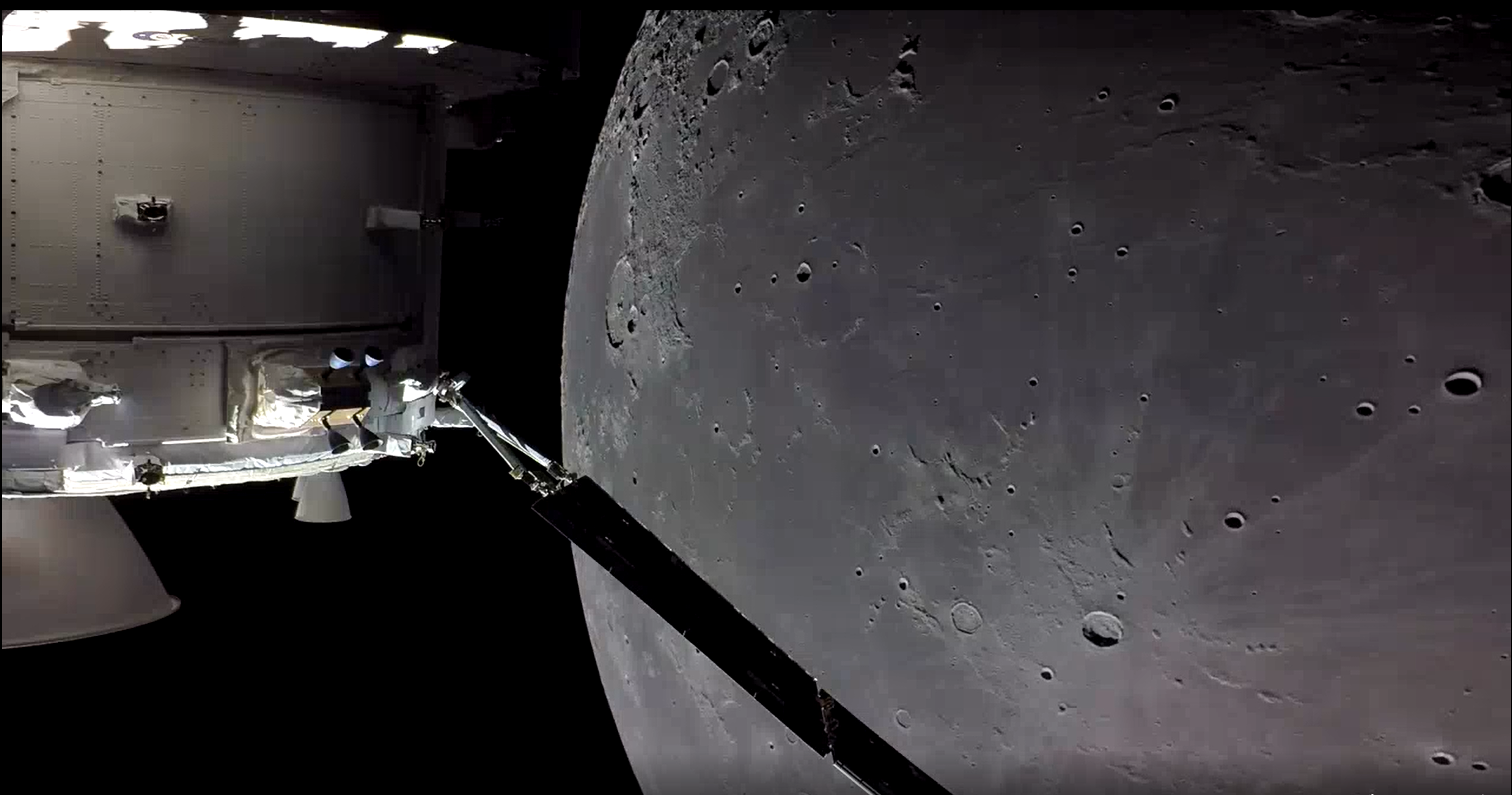
On Monday, the mission management team convened and polled “go” to deploy recovery assets off the coast of California ahead of Orion’s splashdown on Dec. 11.
As soon as Orion splashes down, a team of divers, engineers, and technicians will depart the ship on small boats and arrive at the capsule. Once there, they will secure it and prepare to tow it into the back of the ship, known as the well deck. The divers will attach a cable to pull the spacecraft into the ship, called the winch line, and up to four additional tending lines to attach points on the spacecraft. The winch will pull Orion into a specially designed cradle inside the ship’s well deck and the other lines will control the motion of the spacecraft.
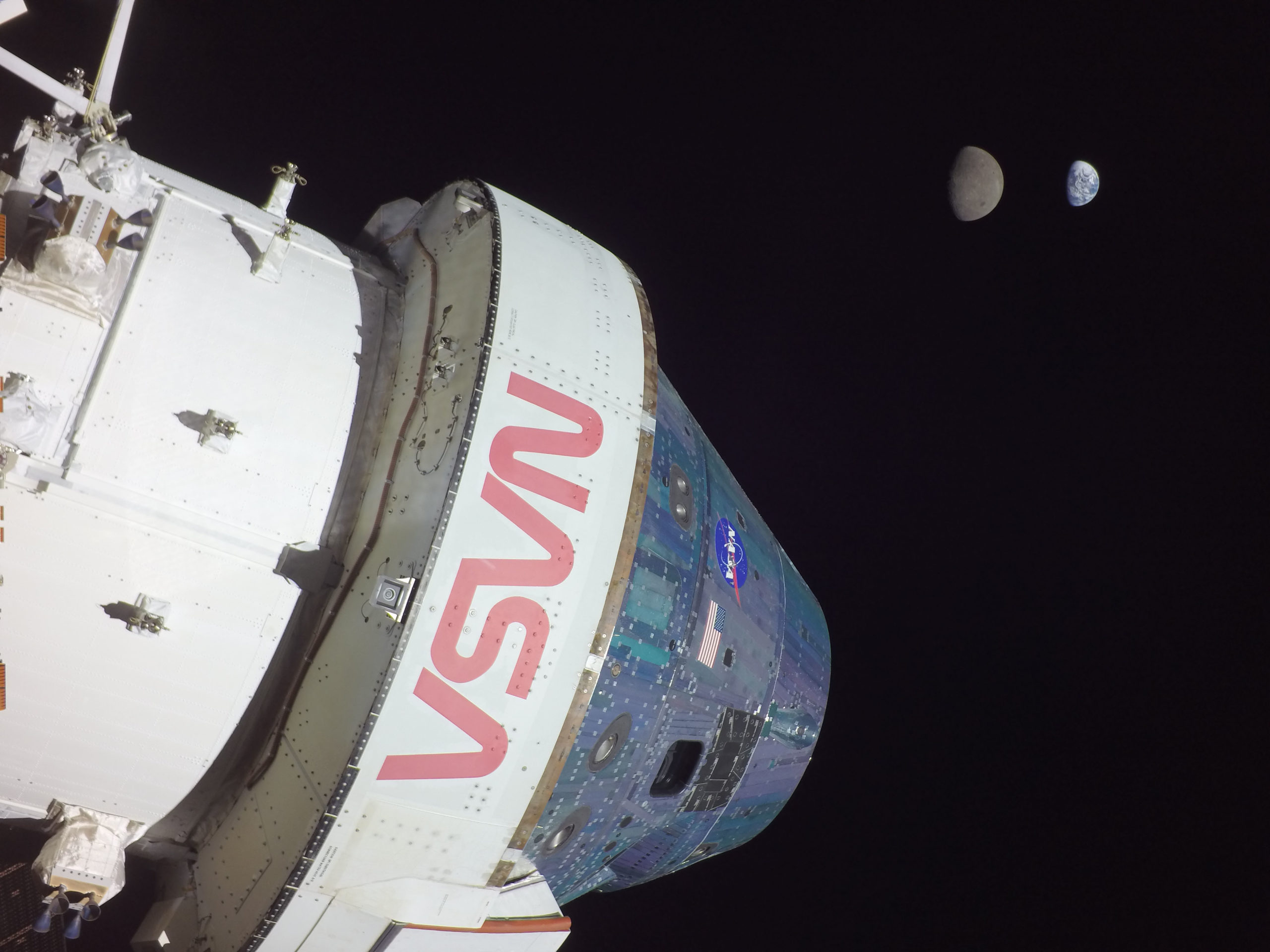
Once Orion is positioned above the cradle assembly, the well deck will be drained and Orion will be secured on the cradle.
Orion will use a skip reentry technique to slow its speed as it hits the Earth’s atmosphere at some 25,000 mph and reaches about 5000 degrees F.
Frictional drag and a total of 11 parachutes will slow Orion down to a splashdown speed of a much gentler 20 mph.

